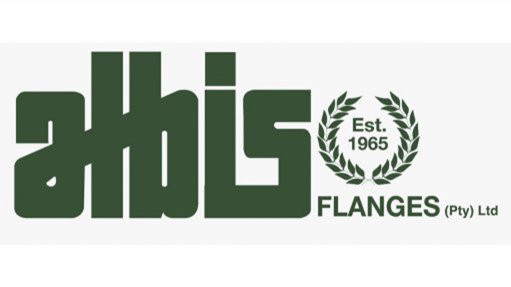HS modernisation step
The World Customs Organisation (WCO) on October 29 announced the release of its 95-page ‘Final Report of the Exploratory Study on the Possible Strategic Review of the Harmonised System (HS)’. The announcement came 285 days after the publication of the public version of the WCO’s ‘Interim Report on the Exploratory Study on a Possible Strategic Review of the HS’, as well as its presentation titled ‘An Introduction to the Exploratory Study on the Possible Strategic Review of the HS’, which was covered in this column of February 9, titled ‘HS exploratory study’.
The final report was expected to have been presented to the HS Committee (HSC) on September 4.
In addition to these documents, the WCO secretariat also published two articles, ‘Some common questions about the HS, and how to change it to meet needs’ and ‘WCO launches an exploratory study project on a possible strategic review of the HS’.
The WCO study marks a critical step in evaluating the current state and long-term sustainability of the HS, which has served as the backbone of global customs classification for decades. You might recall that the ‘Convention on Nomenclature for the Classification of Goods in Customs Tariffs’ came into force on September 11, 1959, having been completed in 1931 by the League of Nations, the predecessor to the UN Subcommittee of Experts for the Unification of Customs Tariff Nomenclature, more commonly known simply as the ‘Customs Tariff Nomenclature’. It is widely regarded as the ’grandparent’ of the HS.
The HS reportedly faces new challenges, including the rapid growth of e-commerce, the increasing complexity of product lines and diversification of users, as well as increasing demands for sustainability and climate action in trade. These shifts have given rise to crucial questions about whether the HS, in its current form, can continue to meet the evolving needs of its users effectively and timeously.
The WCO’s exploratory study is a response to these concerns. It provides an opportunity to consider and assess how the HS can evolve and adapt to these changes, while maintaining its role as a global standard. The report highlights critical observations and recommendations arising from an indepth review of the HS and its related tools, offering insights into potential areas for improvement.
This study, which was initiated two years ago, aimed to deliver analysis of the ‘health’ of the HS. Its ultimate goal was to identify enhancement opportunities and propose strategic options to ensure that the HS remains a relevant and effective tool in an evolving global trade landscape. With the world moving towards digitalisation, new trade patterns and stronger emphasis on sustainability, the WCO acknowledges the need for the HS to be adaptable, user friendly and future-proofed.
As an exploratory study, its aim was to promote focused discussion by suggesting concrete ideas to start deliberations among WCO members on the future of the HS. The WCO believes that it succeeded, as the HSC, the policy commission and council took up the challenge to critically examine the report to assess the findings and recommendations that should be further explored or developed into specific change proposals.
According to the WCO, the final report marks the conclusion of the initial study, as well as the beginning of a new chapter in the evolution of the HS.
As for the ‘concluding summary’, it offers an interesting and telling observation: “The HS is a highly valuable and important tool which has served, and continues to serve, well. However, it is a tool best suited to experts and yet is required to be used by people with no expertise in classification. Hence, the quality of its use leaves much to be desired in terms of accuracy and consistency. Addressing this dilemma creates a requirement for substantial work to simplify and clarify the use of the HS as much as possible.”
The WCO concludes that “much of the consideration of where the HS goes in the future will require wider governmental and global consideration of what the priorities are for understanding the nature of what trade occurs in an increasingly complex world. This is what the HS will be required to be measured against”.
Article Enquiry
Email Article
Save Article
Feedback
To advertise email advertising@creamermedia.co.za or click here
Comments
Press Office
Announcements
What's On
Subscribe to improve your user experience...
Option 1 (equivalent of R125 a month):
Receive a weekly copy of Creamer Media's Engineering News & Mining Weekly magazine
(print copy for those in South Africa and e-magazine for those outside of South Africa)
Receive daily email newsletters
Access to full search results
Access archive of magazine back copies
Access to Projects in Progress
Access to ONE Research Report of your choice in PDF format
Option 2 (equivalent of R375 a month):
All benefits from Option 1
PLUS
Access to Creamer Media's Research Channel Africa for ALL Research Reports, in PDF format, on various industrial and mining sectors
including Electricity; Water; Energy Transition; Hydrogen; Roads, Rail and Ports; Coal; Gold; Platinum; Battery Metals; etc.
Already a subscriber?
Forgotten your password?
Receive weekly copy of Creamer Media's Engineering News & Mining Weekly magazine (print copy for those in South Africa and e-magazine for those outside of South Africa)
➕
Recieve daily email newsletters
➕
Access to full search results
➕
Access archive of magazine back copies
➕
Access to Projects in Progress
➕
Access to ONE Research Report of your choice in PDF format
RESEARCH CHANNEL AFRICA
R4500 (equivalent of R375 a month)
SUBSCRIBEAll benefits from Option 1
➕
Access to Creamer Media's Research Channel Africa for ALL Research Reports on various industrial and mining sectors, in PDF format, including on:
Electricity
➕
Water
➕
Energy Transition
➕
Hydrogen
➕
Roads, Rail and Ports
➕
Coal
➕
Gold
➕
Platinum
➕
Battery Metals
➕
etc.
Receive all benefits from Option 1 or Option 2 delivered to numerous people at your company
➕
Multiple User names and Passwords for simultaneous log-ins
➕
Intranet integration access to all in your organisation


















